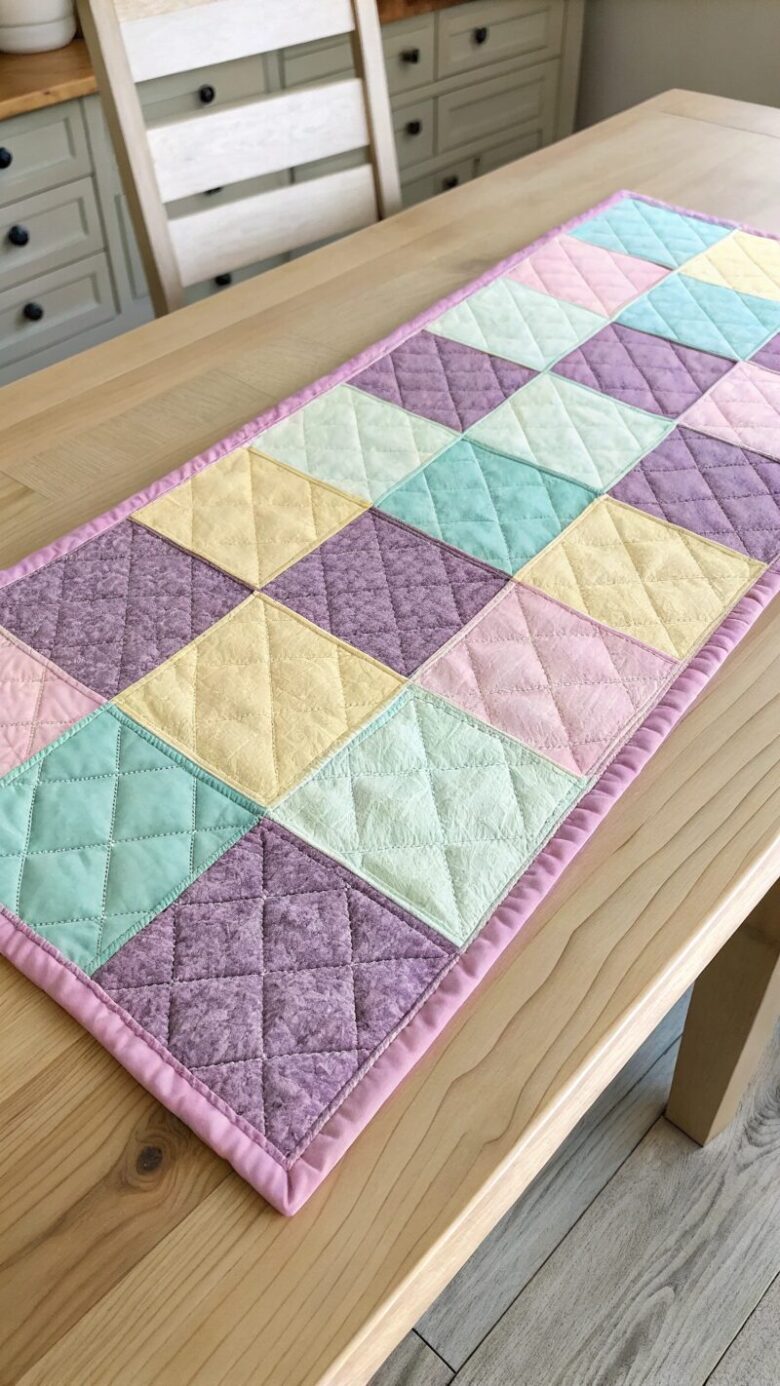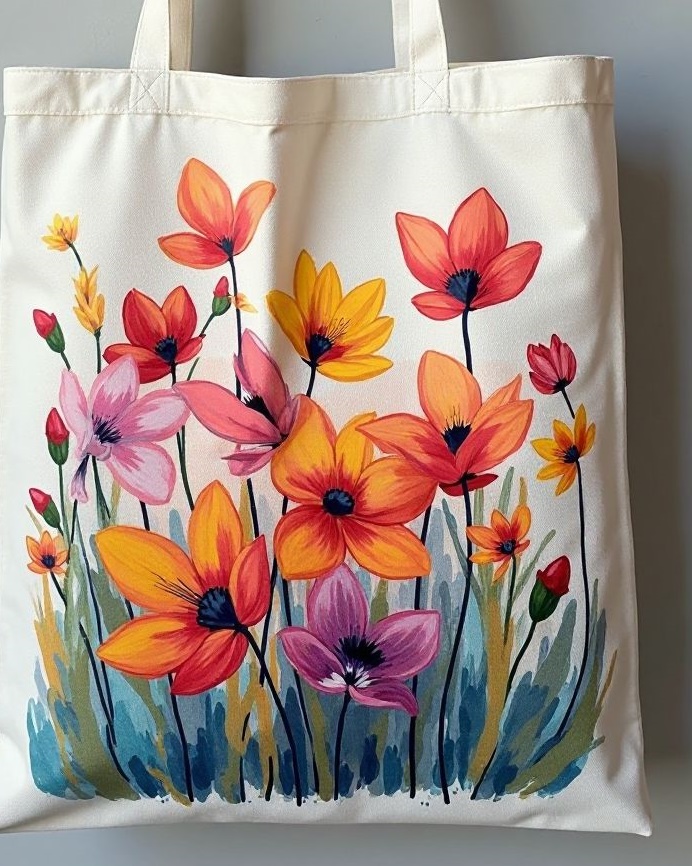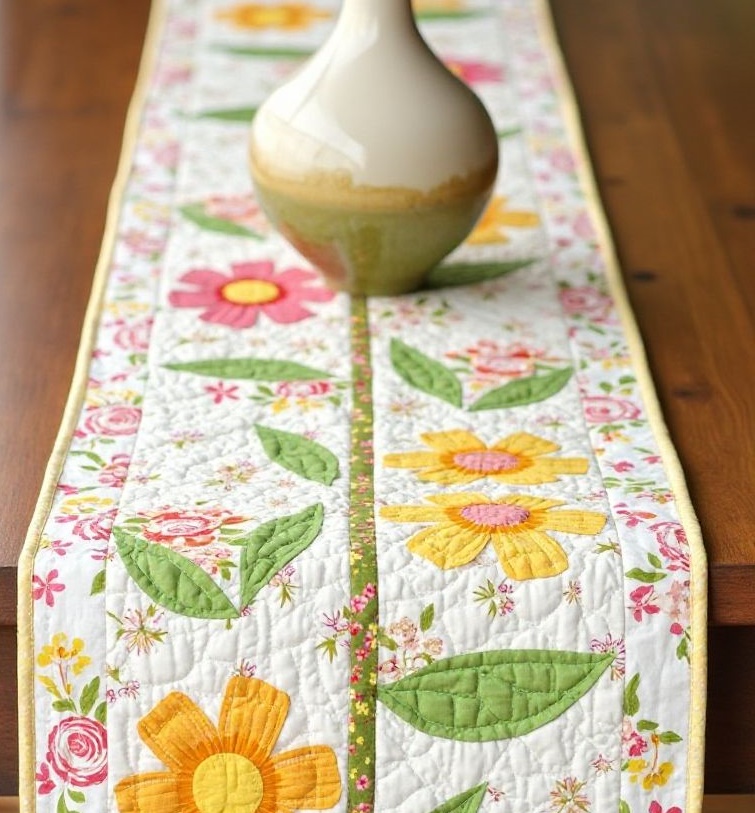Why Sew Your Own Table Runner?
Let me tell you, there’s something absolutely magical about walking into my dining room and seeing a table runner I made with my own two hands draped across my table. It’s like wearing a piece of jewelry you crafted yourself – there’s this incredible sense of pride and accomplishment that store-bought items just can’t match.
I started sewing table runners about three years ago when I was looking for the perfect spring piece to brighten up my dining space. After spending hours scrolling through online stores and visiting countless home décor shops, I realized I was being way too picky. Nothing felt quite right – the colors were off, the patterns didn’t speak to me, or the prices were absolutely ridiculous for what seemed like simple fabric rectangles.
That’s when it hit me: why not make my own? I’d been sewing for years, making everything from curtains to throw pillows, so how hard could a table runner be? Spoiler alert: it wasn’t hard at all, and it opened up a whole world of seasonal decorating possibilities that I never knew existed.
The best part about sewing your own table runners is the complete creative control you have. Want a runner that perfectly matches your grandmother’s vintage china? You can make that happen. Need something that transitions beautifully from your fall décor to your winter setup? Easy peasy. Plus, you’ll save a ton of money – I can make a gorgeous table runner for about $15-20 that would cost me $60-80 in stores.
Materials You Will Need
Before we dive into the fun patterns, let’s talk about what you’ll need to get started. The beauty of table runner projects is that they don’t require a massive investment in materials or tools.
For fabric, you’ll want to choose something that’s substantial enough to lay nicely but not so thick that it’s difficult to work with. Cotton quilting fabric is my absolute favorite – it comes in incredible patterns, washes beautifully, and presses like a dream. Linen is another fantastic option if you’re going for a more sophisticated, textured look.
You’ll need basic sewing supplies: sharp fabric scissors, pins, a seam ripper (trust me, you’ll use it), measuring tape, and a good iron. A rotary cutter and cutting mat will make your life so much easier, especially for straight cuts, but they’re not absolutely necessary.
Thread-wise, I usually stick with neutral colors like cream, gray, or beige that will work with multiple projects. However, sometimes I love using contrasting thread as a design element – it adds such a nice handmade touch.
Don’t forget interfacing if you want extra body in your runner, and bias tape or ribbon if you’re planning to add binding to the edges. Some patterns also call for batting if you want a slightly quilted effect.
Basic Sewing Skills Needed
Here’s the wonderful news: you don’t need to be a sewing expert to create beautiful table runners. If you can sew a straight line and feel comfortable with basic techniques, you’re golden.
The main skills you’ll use are straight seams, pressing, and turning corners. Most table runners are essentially rectangles with finished edges, so once you master that basic concept, you can tackle any of these patterns.
I always recommend practicing your seam allowances on scraps first. Consistent seam allowances make the difference between a runner that looks professionally made and one that looks, well, homemade in not the best way.
Spring Table Runner Patterns
Floral Fabric Favorites
Spring is when I get absolutely giddy about sewing again after the long winter months. There’s something about those first warm days that makes me want to fill my house with fresh, bright fabrics.
My go-to spring runner uses a gorgeous floral print as the main fabric with solid coordinating colors for accent strips or borders. I love choosing fabrics with soft pink cherry blossoms, delicate blue forget-me-nots, or cheerful yellow daffodils.
For this pattern, I cut my main floral fabric to about 54 inches long and 16 inches wide (perfect for my dining table), then add 2-inch strips of coordinating solid fabric along the long edges. The key is choosing colors that are already present in your floral print – it creates this beautiful cohesive look that seems effortless but is actually quite intentional.
Pastel Patchwork Design
This one is perfect if you have a stash of spring-colored fabric scraps. I create a patchwork design using soft pastels – think lavender, mint green, butter yellow, and the palest pink.
I cut squares that are 4 inches by 4 inches, then arrange them in a pattern that pleases my eye. Sometimes I go for a completely random look, other times I create gentle gradients from light to slightly darker shades. The finished runner ends up looking like a spring garden in fabric form.
Summer Table Runner Patterns
Bright Colors and Citrus Prints
Summer calls for bold, happy colors that make me smile every time I walk past my table. I’m talking vibrant oranges, sunny yellows, and lime greens that practically scream “vacation vibes.”
My favorite summer runner features a citrus print – maybe lemons and limes on a white background – paired with bright solid strips. I sometimes add rick-rack trim along the edges because it gives such a fun, playful feeling that’s perfect for summer entertaining.
Beach Theme Runner
Living nowhere near a beach doesn’t stop me from bringing those relaxing coastal vibes into my home. For this runner, I choose fabrics in ocean blues and sandy beiges, often with subtle nautical prints like anchors, sailboats, or seashells.
I love adding texture to this one by incorporating different fabric weights – maybe a smooth cotton for the main body and a slightly rougher linen for accent pieces. It creates this wonderful tactile experience that reminds me of seaside textures.
Fall Table Runner Patterns
Cozy Plaid Style
Fall is when I really go overboard with table runners because the season just begs for cozy, layered textiles. My plaid runner uses rich burgundy, deep orange, and golden yellow fabrics arranged in a traditional plaid pattern.
The trick with plaid is making sure your lines are straight and your intersections are precise. I spend extra time measuring and pinning, but the results are so worth it. This runner works beautifully from September through November and pairs perfectly with my fall centerpieces.
Leaf and Pumpkin Motifs
This is probably my most popular pattern when friends come over during fall. I use fabrics featuring autumn leaves, pumpkins, and acorns in rich, warm colors. Sometimes I’ll appliqué additional leaf shapes on top for extra dimension.
The key is balancing busy prints with solid colors so the overall effect isn’t overwhelming. I usually use the printed fabric for the center panel and solid coordinating colors for borders or accent strips.
Winter Table Runner Patterns
Snowflake Stitching
Winter runners are all about creating that cozy, warm feeling when it’s cold and dark outside. My snowflake runner uses white and silver fabrics with delicate snowflake prints, and I sometimes add metallic thread for extra sparkle.
I love incorporating different textures in winter pieces – maybe a smooth cotton paired with a slightly fuzzy flannel or a fabric with subtle metallic threads woven through it.
Red and Green Holiday Runner
This is my Christmas showstopper. Rich red fabric with gold accents, paired with deep forest green, creates a classic holiday look that works from Thanksgiving through New Year’s.
I sometimes add small jingle bells to the corners or incorporate ribbon weaving through the fabric for extra festive flair. The key is not going overboard – a little holiday sparkle goes a long way.
Tips for Choosing Fabrics and Colors
When selecting fabrics, I always consider the overall mood I want to create and how the runner will work with my existing décor. I take photos of my dining room and bring them fabric shopping so I can see how potential choices will look in my actual space.
Quality matters more than you might think. Investing in good fabric means your runner will wash better, wear longer, and maintain its appearance through multiple seasons of use.
How to Personalize Your Table Runners
The beauty of making your own runners is the ability to add personal touches that reflect your style. I love adding family initials with decorative stitching, incorporating fabric from meaningful sources (like pieces from my grandmother’s apron collection), or using colors that coordinate with family photos displayed nearby.
Conclusion: Enjoy Your Handmade Table Decor
Creating seasonal table runners has become one of my favorite ways to mark the changing seasons and add personality to my home. Each runner tells a story – the spring floral that reminds me of my first successful garden, the summer citrus that brings back memories of vacation, the cozy fall plaid that makes every dinner feel special.
Start with simple patterns and basic techniques, then let your creativity guide you toward more complex designs. Before you know it, you’ll have a collection of handmade runners that bring joy to your table year-round.










